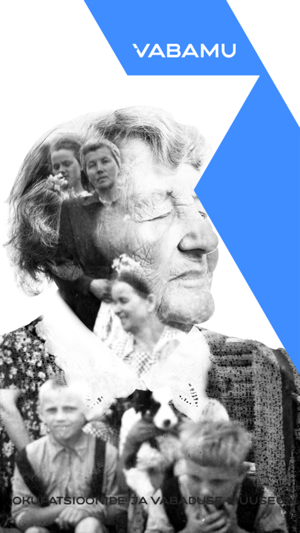價格:免費
檔案大小:13.6 MB
版本需求:需要 iOS 11.2 或以上版本。與 iPhone、iPad 及 iPod touch 相容。
支援語言:英語

Vabamu e-Guide, Museum of Occupations
Today, freedom is being discussed more than ever before. What is freedom? Who defines it? How is freedom being manipulated? What can individuals do in the name of freedom? Although the world is seemingly becoming increasingly freer, the restriction, redefinition, and exploitation of liberties is occurring at the same time.
Freedom has remained an important ideal for Estonia. Estonia was occupied for the majority of the last 70 years by harsh military regimes at numerous times. The nation of Estonia needed to cope with a manipulative and propagandistic regime for decades, until a nationwide movement finally emerged in the name of public freedom in the late 1980s. In present-day Estonia, however, the concept of freedom and the question of what it means is emerging more and more.
In the museum dedicated to the occupations and subsequent freedom of Estonia, the permanent Vabamu exhibition tells the story of Estonia from 1940 until the present day. We focus on the personal in order to provide a glimpse into what happened. A comprehensive e-Guide complements the exhibition, looking at history at the grass-roots level and asking questions about the nature of freedom. We have used many authentic memories from those people for whom the word “freedom” has a particular meaning: victims, executioners , followers, freedom fighters, collaborators, and dissenters, among others. The emphasis is on the role of each person in both the abolition and conservation of freedom. The e-Guide is available in seven languages (Estonian, Russian, English, Finnish, German, French and Spanish).
The exhibition is divided into five sections.
The Crimes against Humanity section shows the tragic events of recent history: deportations, murders, and the Holocaust. We highlight the fates and roles of ordinary people.

Estonians in the Free World is a section in which we talk about the people that had to escape an unfree country and create new lives in free societies. Adapting to the new situation was not always painless.
In the section on Soviet Life, we discuss the long period of occupation during which society was not free and each person was faced with a decision on how to behave. Even a regular working day set an array of decisions before individuals.
On the floor of Recovery, we deal with the era during which society went through a profound change and publicly began to demand freedom. At the heart of the exposition are eight people that cannot be found in the history books.
In the section on Freedom, we call upon people to discuss various options. The structure of the exhibition is based on the options that accompany freedom, including the choice between liberty and responsibility.
Many professionals have been involved in the creation of the new permanent exhibition. The curator of the thematic room on Crimes against Humanity is Sander Jürisson (Head of Exhibitions, Museum of Occupations). Maarja Merivoo-Parro (PhD candidate and junior researcher, Tallinn University) uncovers escape attempts during World War II and the lives of Estonians in exile. The curator of the section on life in Soviet Estonia is Uku Lember (PhD, lecturer, Tallinn University). The part of the exhibition focusing on the restoration of independence was developed by Aro Velmet (PhD, postdoctoral researcher, Oxford University). The thematic room on freedom was put together by communications expert Daniel Vaarik and artist Kaido Ole.
Narration for the e-Guide was provided by actor Sergo Vares. The e-Guide is an inclusive guide in a deliberative and discursive form aimed at steering each visitor towards thinking critically and analysing their personal perspectives.

The e-Guide was completed in collaboration with Estonian Public Broadcasting under the leadership of sound director Külli Tüli.

支援平台:iPhone
